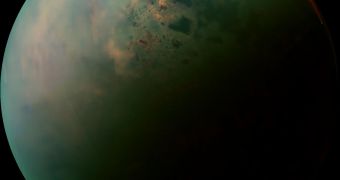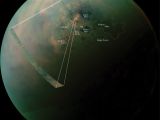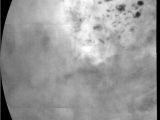The Cassini space probe has earned its price several times over. It's been scanning Saturn and its moons for almost a decade now and it is still uncovering new things and providing new, interesting data.
As much as there is to know about Saturn, the large moons it keeps around are at least as interesting.
One of the most puzzling is Titan, which has several Earth-like characteristics, even if it's very, very different from other points of view.
Cassini has shot several new photos of the moon's north pole and the lakes and seas that form there. There are liquid methane and ethane seas, of course. Titan is so cold that methane, which is found in gas form on Earth, turns to liquid and water ice is as hard as rock.
This is the first time the probe has been able to get a clear picture of the northern lakes. The south pole is much drier, but the moon's position and Cassini's orbit haven't been suitable for good observations of the northern top.
The probe did scan the north pole with its radar, but the new photos in visible light and infrared are the clearest and most detailed yet.
"Several factors combined recently to give these instruments great observing opportunities. Two recent flybys provided better viewing geometry. Sunlight has begun to pierce the winter darkness that shrouded Titan's north pole at Cassini's arrival in the Saturn system nine years ago," NASA explained.
"A thick cap of haze that once hung over the north pole has also dissipated as northern summer approaches. And Titan's beautiful, nearly cloudless, rain-free weather continued during Cassini's flybys this past summer," it added.
The new images also revealed more about the composition of the lakes. As temperatures rise in the northern hemisphere, the lakes begin to evaporate leaving behind a solid residue, like salt flats left behind by receding seas.
But it's not salt that's left behind on Titan, but rather organic material from the haze that used to cover the moon and which dissolved into the liquid methane.
The new imagery provides more data for scientists to pore over and it even revealed some structures that hadn't been seen before. Now that it's almost summer on Titan's northern half, Cassini will have even more opportunities to study this region.

 14 DAY TRIAL //
14 DAY TRIAL // 

